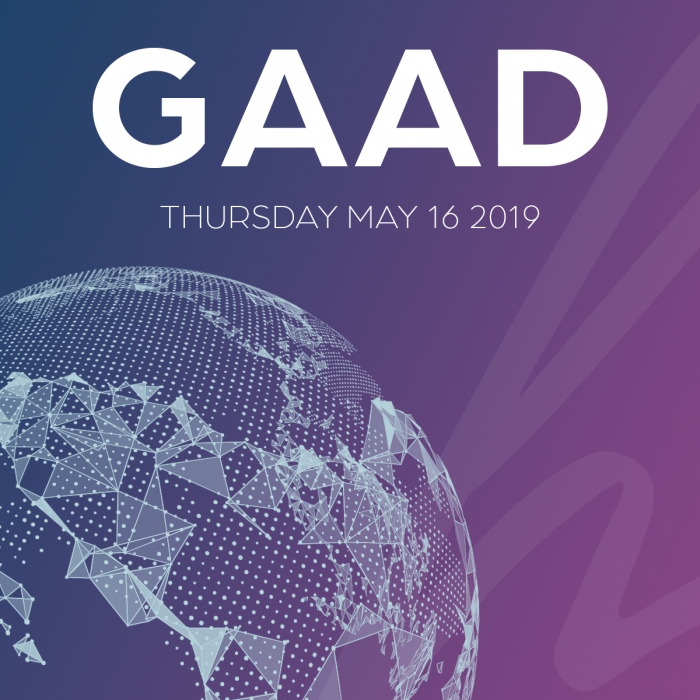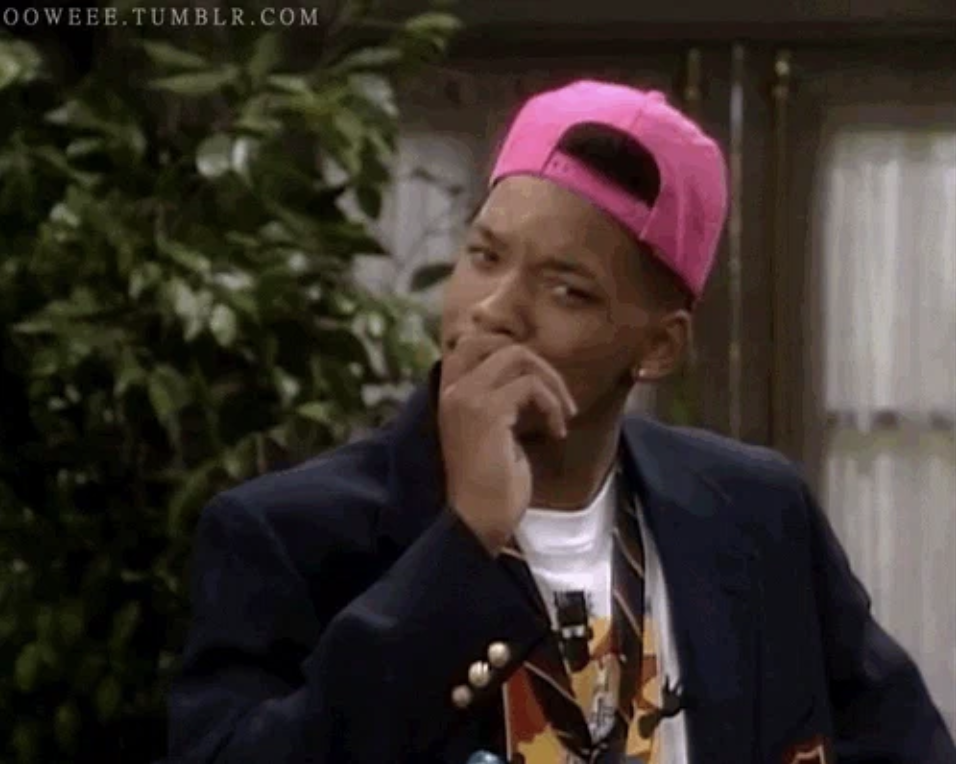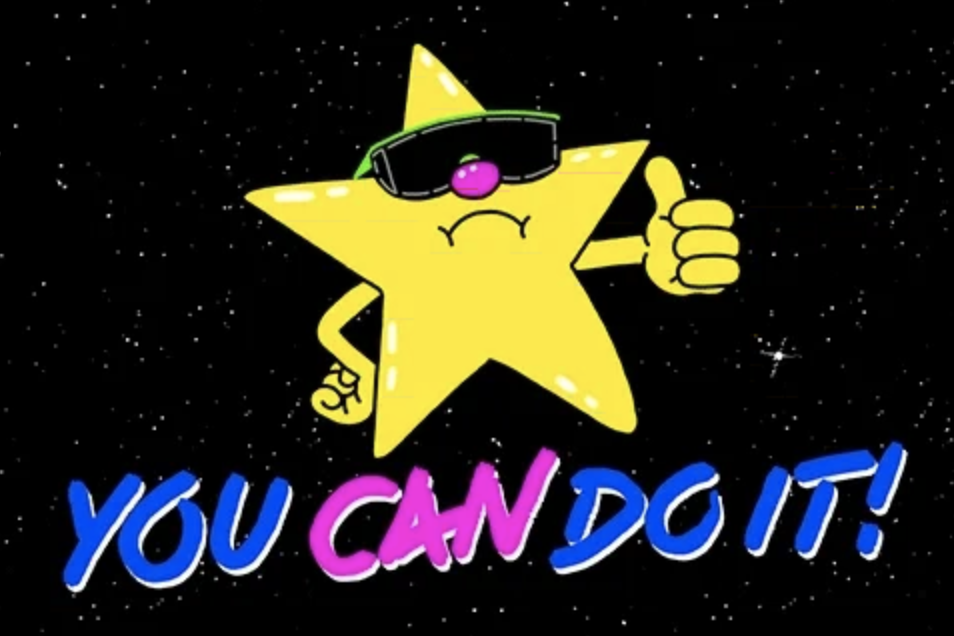
GAAD is short for Global Accessibility Awareness Day. Every year on the third Thursday of May our community comes together to help raise awareness for accessibility everywhere. The objective is to make accessibility mainstream by keeping the conversations relevant and informative within our community.
The "community" in this case is the development and design world. Many community members are affecting accessibility without even knowing it. The key to understanding how this happens is as simple as awareness. Making sure those in our industry are not only informed about the affects their practice has on accessibility, but also understand how they can shape and change their practice is what GAAD is all about. Inclusivity for all.
And you can help just by being part of the conversation.
Whenever we participate in accessibility related discussions, we reflect back on this 2014 interview with co-founder of GAAD, Jennison Asuncion. In this short interview, Asuncion talks to the importance of GAAD and why we all should come together to strive for global accessibility. He sheds light into the importance of awareness, and how people without disabilities also need to pay attention to developing for the needs of those with disabilities.
“All of us are temporarily abled. We’re all aging daily and it isn’t slowing down.”
Our team was inspired by the words of Christine at DrupalCon this year. She touched on all the reasons why people think accessibility is necessary, but also explained how it is so much more than that. Her words embody exactly why Hook 42 is continuously striving for accessibility greatness. Inclusivity for everyone is one of our core values. With GAAD we kindly encourage everyone else to participate in this value, in any way you can. GAAD's mission that everyone in our community take, at minimum, one full day a year to focus on improving accessibility practices is the least we can do to unanimously provide fully accessible web experiences for everyone.
We put together a list of ways you can get involved on GAAD. This could be learning new tools, understanding how to implement accessibility on your own website, knowing the different levels of web accessibility compliance, keeping up with an evolving legal atmosphere, and many other things. The variety of topics that fall within web accessibility are not small, and that is why it is easy for everyone to get involved in their own way.
We encourage you to join us in raising awareness for such a great cause. So how can you do it?

Find An In Person Event
GAAD isn’t just about digitally being involved with accessibility awareness. The vast community around GAAD also has in-person gatherings where accessibility is the topic of discussion. Did you know that there are, as of today, 69 different cities with events going on? If you haven't yet checked, see if there is an event going on in a city near you. It will be a great way to meet other accessibility advocates near you and participate in educational discussions about accessibility.
Join A Webinar
If you couldn't find a city near you with an in-person event, the next best thing is to join a live discussion via webinars. We put together a short list of webinars found on the GAAD website that you can take a look at. Make sure you follow the links and register, if it is required! You won't want to miss these discussions.
- ADA and the Internet - Legal Update
- Digital Accessibility the Invisible Civil Rights Challenge of the 21st Century
- Who, What & Where: The Facts About VPATs
- Born Accessible: Ensuring You're Adopting Accessible Course Materials
- How To Promote Accessibility At Your Organization
For descriptions of each webinar, visit the GAAD events website.
Join A Challenge
From game development to SiteImprove’s seven day GAAD challenge, there are many companies encouraging even more hands-on participation for GAAD. If you want to test your skills in accessibility, take a peek at the challenges, or better yet create your own! Test yourself and your colleagues on accessibility to find areas of improvement to take the first step at better web accessibility.
Practice Accessibility
If you aren’t sure you want to go that deep into accessibility, but you still want to understand what it is like to build inclusive experiences, try some of these first-hand looks into accessibility:
- Go mouseless for an hour
- Enlarge your fonts
- Check order of elements
- Change the color contrast on your screen
- Surf the web with a screen reader for an hour
- Turn on accessibility features on your phone
For a more detailed description of how to implement these practices, check out the GAAD participation page.
Listen to Talks
The team at Hook 42 has given a number of accessibility talks in our community. We love gabbing with our community about it. Sometimes it’s hard to keep up with all of them though, so now is the time to go back and listen to some discussions you may have missed. This past DrupalCon Aimee Degnan spoke on two different accessibility topics, A11y tools & Accessibility 201 with her accessibility partner Caroline Boyden of UC Berkeley. You can find many other amazing talks about accessibility by checking past conference websites, or simply searching on YouTube.
Accessibility (A11Y) Talks
Furthermore, you can also go back and listen to some of the A11y meetup conversations that happen once a month. We’ve put together a few recaps from the last few sessions we attended that give a broader overview of the discussions. You can take a look at them in our blog. The talks are also recorded and posted on the A11y YouTube channel.
Community Contribution
In the open source world, we are already very familiar with community contribution. The importance of a group of people coming together, with a variety of past experiences, levels of expertise, and general knowledge of a subject can really change the course of a discussion and the outcome of products. Accessibility efforts are no stranger to this concept either. The more people we have coming together to contribute to accessibility, the more traction it will gain as an important part of development. How can you directly contribute to accessibility though?
Spread the Word
As we spoke about earlier, the most important piece of knowledge you can give someone about accessibility is awareness. Simply writing about it and spreading the word is contributing to the accessibility community. The best part is, it doesn't even have to be long, or original. Sharing someone else's words of wisdom, or a quick tweet about web accessibility is enough to keep the conversation alive.
Caption Your Videos
If you want, you can also take it a step further by actually implementing some accessibility best practices on content you or your organization has on the web right now. Maybe you have a large video library that needs captions. Don’t worry we’re not asking you to dive into all of them, but spend the day captioning a video or two. Small steps in the right direction count!
Convert A PDF
If you don’t have any videos, what about PDFs? PDFs require accessibility compliance just like a webpage. You’ll need to make sure semantically your content is in the right order, and that alt text is provided for images in your document, among many other things. You can learn more about making PDFs accessible on the webAIM website.
Do An Accessibility Scan
With a variety of ways to do this available both for free and as purchasable applications, something you can do is run a scan on a website you were part of building. Once the scan is complete, see if there are any ways you can improve that page. If you don’t have access to fix it anymore, take notes for future websites and start implementing those items in your next build.

GAAD Here We Come
With GAAD right around the corner, we hope you’ll set aside some time to indulge in all things accessibility. Our team will be writing, talking and learning about a variety of things and we encourage you to do the same. Let’s continue to put accessible discussions on the map as we head into GAAD 2019.
